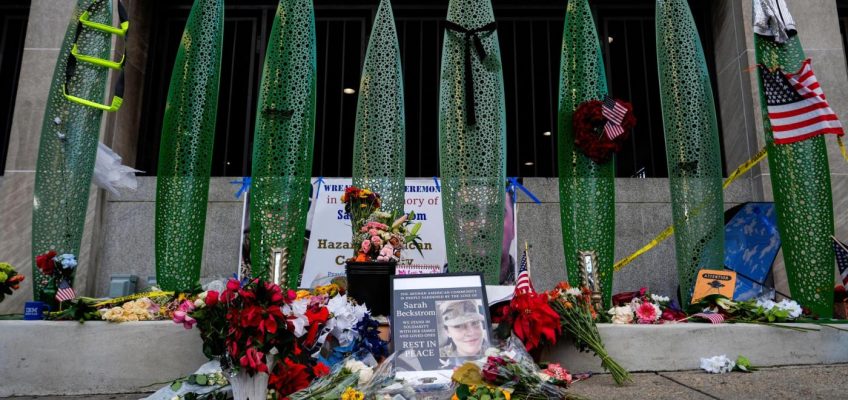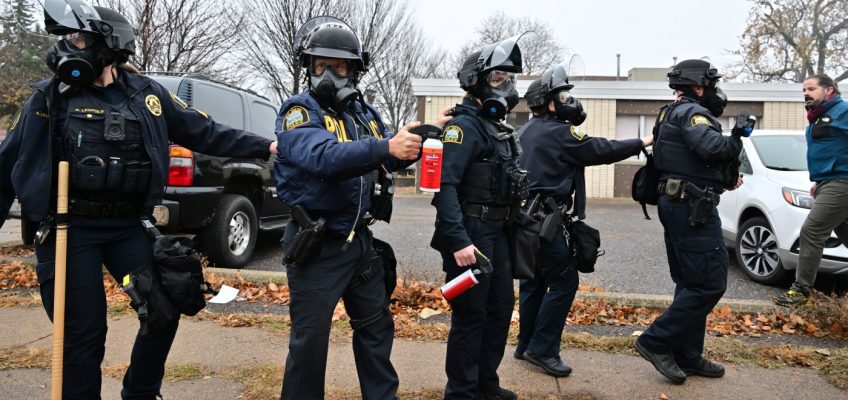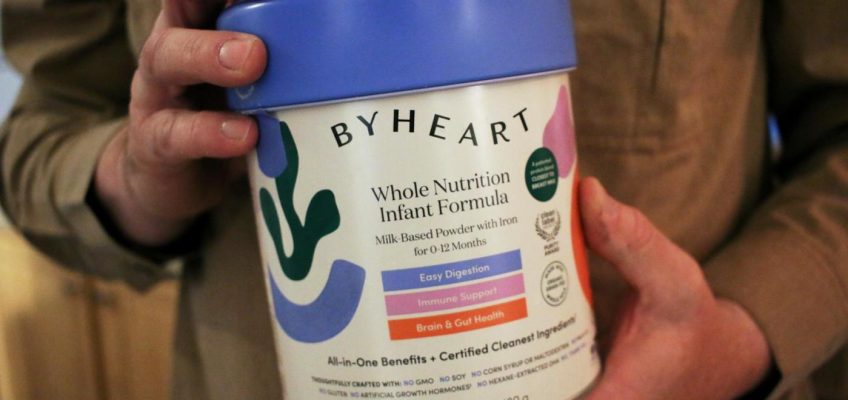By JONEL ALECCIA, Associated Press
Federal health officials on Wednesday expanded an outbreak of infant botulism tied to recalled ByHeart baby formula to include all illnesses reported since the company began production in March 2022.
The U.S. Food and Drug Administration said investigators “cannot rule out the possibility that contamination might have affected all ByHeart formula products” ever made.
The outbreak now includes at least 51 infants in 19 states. The new case definition includes “any infant with botulism who was exposed to ByHeart formula at any time since the product’s release,” according to the U.S. Centers for Disease Control and Prevention. The most recent illness was reported on Dec. 1.
No deaths have been reported in the outbreak, which was announced Nov. 8.
Previously, health officials had said the outbreak included 39 suspected or confirmed cases of infant botulism reported in 18 states since August. That’s when officials at California’s Infant Botulism Treatment and Prevention Program reported a rise in treatment of infants who had consumed ByHeart formula. With the expanded definition, the CDC identified 10 additional cases that occurred from December 2023 through July 2025.
ByHeart, a New York-based manufacturer of organic infant formula founded in 2016, recalled all its products sold in the U.S. on Nov. 11. The company, which accounts for about 1% of the U.S. infant formula market, had been selling about 200,000 cans of the product each month.
News that ByHeart products could have been contaminated for years was distressing to Andi Galindo, whose 5-week-old daughter, Rowan, was hospitalized in December 2023 with infant botulism after drinking the formula. Galindo, 36, of Redondo Beach, California, said she insisted on using ByHeart formula to supplement a low supply of breast milk because it was recommended by a lactation consultant as “very natural, very gentle, very good for the babies.”
“That’s a hard one,” Galindo said. “If there is proof that there were issues with their manufacturing and their plant all the way back from the beginning, that is a problem and they really need to be held accountable.”
ByHeart officials did not immediately respond to questions about the expanded outbreak.
Lab tests detected contamination
The FDA sent inspectors last month to ByHeart plants in Allerton, Iowa, and Portland, Oregon, where the formula is produced and packaged. The agency has released no results from those inspections.
The company previously reported that tests by an independent laboratory showed that 36 samples from three different lots contained the type of bacteria that can cause infant botulism.
Inspection documents showed that ByHeart had a history of problems with contamination.
In 2022, the year ByHeart started making formula, the company recalled five batches of infant formula after a sample at a packaging plant tested positive for a different germ, cronobacter sakazakii. In 2023, the FDA sent a warning letter to the company detailing “areas that still require corrective actions.”
A ByHeart plant in Reading, Pennsylvania, was shut down in 2023 just before FDA inspectors found problems with mold, water leaks and insects, inspection documents show.
Trump says the US has seized an oil tanker off the coast of Venezuela
Foreigners allowed to travel to the US without a visa could soon face new social media screening
MacKenzie Scott has given $26B to nonprofits since 2019. Here’s what she supported in 2025
Holiday shipping deadlines: When to ship your gifts this year so they arrive on time
Trump’s crackdown on immigration is taking a toll on child care workers
Infant botulism is rare
Infant botulism is a rare disease that affects fewer than 200 babies in the U.S. each year. It’s caused when infants ingest botulism bacteria that produce spores that germinate in the intestines, creating a toxin that affects the nervous system. Babies are vulnerable until about age 1 because their gut microbiomes are not mature enough to fight the toxin.
Baby formula has previously been linked to sporadic cases of illness, but no known outbreaks of infant botulism tied to powdered formula have previously been confirmed, according to research studies.
Symptoms can take up to 30 days to develop and can include constipation, poor feeding, loss of head control, drooping eyelids and a flat facial expression. Babies may feel “floppy” and can have problems swallowing or breathing.
The sole treatment for infant botulism is known as BabyBIG, an IV medication made from the pooled blood plasma of adults immunized against botulism. California’s infant botulism program developed the product and is the sole source worldwide.
The antibodies provided by BabyBIG are likely most effective for about a month, although they may continue circulating in the child’s system for several months, said Dr. Sharon Nachman, an expert in pediatric infectious disease at Stony Brook Children’s Hospital.
“The risk to the infant is ongoing and the family should not be using this formula after it was recalled,” Nachman said in an email.
Families of several babies treated for botulism after drinking ByHeart formula have sued the company. Lawsuits filed in federal courts allege that the formula they fed their children was defective and ByHeart was negligent in selling it. They seek financial payment for medical bills, emotional distress and other harm.
The Associated Press Health and Science Department receives support from the Howard Hughes Medical Institute’s Department of Science Education and the Robert Wood Johnson Foundation. The AP is solely responsible for all content.




